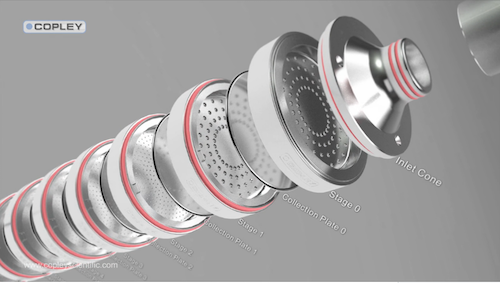Members Login

Channels
Special Offers & Promotions
Confused about Cascade Impaction? Watch the New Animations from Copley Scientific to Improve your Understanding of Inhaled Drug Product Testing

Copley Scientific, the world’s leading manufacturer and supplier of inhaler test equipment, has released two new educational animations that provide a clear, easy to understand introduction to critical aspects of inhaled product testing.
The videos, entitled ‘How does a cascade impactor work?’ and ‘System for improved in vitro-in vivo correlations (IVIVCs) of inhaled drug products’ are an excellent resource for training, for researchers new to inhaled product testing and/or those seeking enhanced testing strategies.
The size of particles delivered by an inhaled product influences where the drug deposits in the lung, affecting efficacy and is therefore considered a critical quality attribute. Uniquely, cascade impaction enables the generation of an aerodynamic particle size distribution specifically for the active pharmaceutical ingredient (API) within a formulation and is specified in the pharmacopoeias for the testing of all inhaled products. ‘How does a cascade impactor work?’ takes the viewer inside an animated cascade impactor - the Andersen Cascade Impactor (ACI) - to provide a step-by-step explanation of how it separates and collects particles for subsequent chemical analysis (typically by HPLC). In this way the animation supports the development of a robust understanding of this pivotal analytical technique, which can, at times, be a little difficult to understand.
Ensuring that data measured in the lab – in vitro – is as representative as possible of what happens to a drug in the body – in vivo – is extremely valuable for bioequivalence and further advancement of inhaled technologies. The second animation presents an optimal test set-up that delivers enhanced IVIVCs, relative to standard pharmacopoeial test methods, and explains how each key element works. Equipment highlighted includes: the breath simulator, for the application of a patient representative breath profile; the Alberta Idealised Throat (AIT) for more realistic modelling of the human throat; and the Mixing Inlet – a key piece of equipment that enables application of a variable flow rate through the inhaler, whilst maintaining a constant flow rate through the cascade impactor; in this case the Next Generation Impactor (NGI). Cascade impactors must always be operated at a constant flow rate, which has, until now, been a limitation of this methodology when considering improving IVIVCs.
more news from copley scientific
Media Partners


